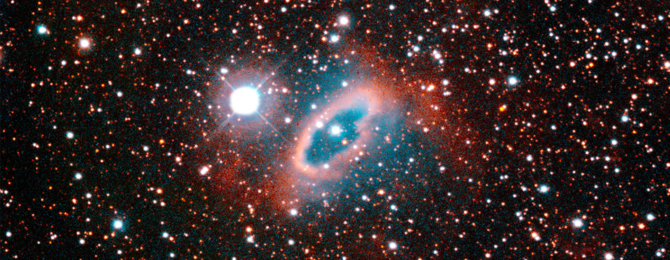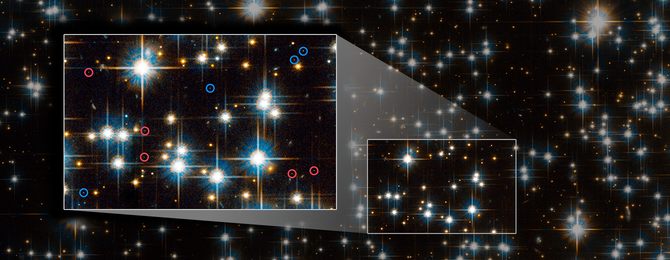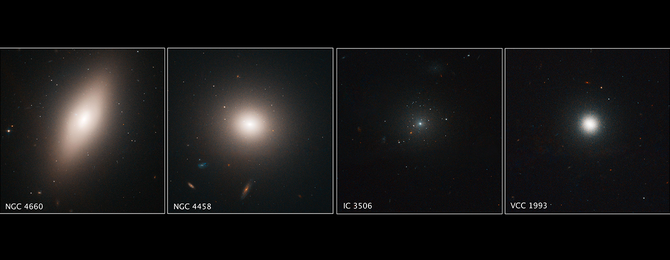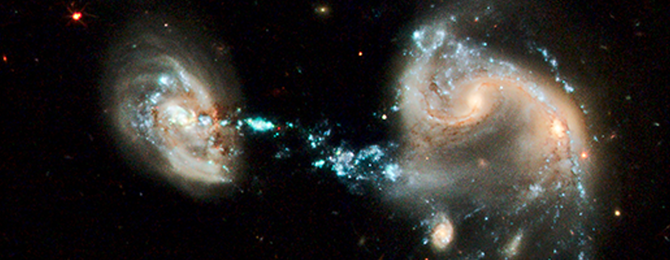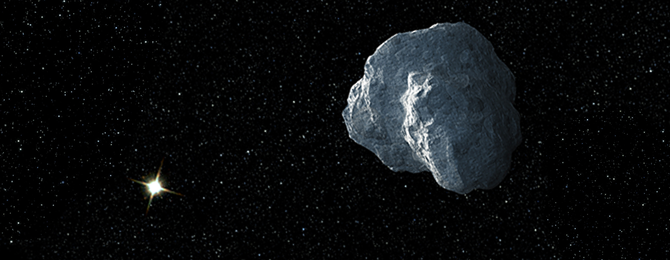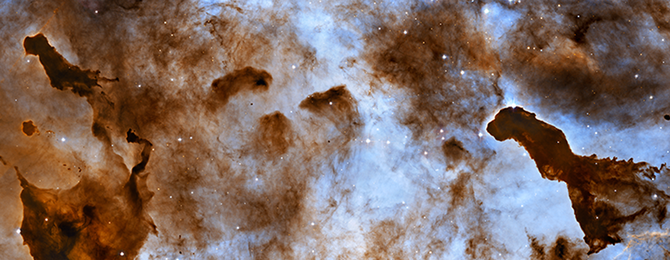Robby
Helper Bot
Hubble Survey Finds Missing Matter, Probes Intergalactic Web

In the May 20 issue of The Astrophysical Journal, Charles Danforth and Mike Shull (University of Colorado, Boulder) report on NASA's Hubble Space Telescope and NASA's Far Ultraviolet Spectroscopic Explorer (FUSE) observations taken along sight-lines to 28 quasars. Their analysis represents the most detailed observations to date of how the intergalactic medium looks within about four billion light-years of Earth. The astronomers say they have definitively found about half of the missing normal matter, called baryons, in the space between the galaxies.
This illustration shows how the Hubble Space Telescope searches for missing baryons, by looking at the light from quasars several billion light-years away. Imprinted on that light are the spectral fingerprints of the missing ordinary matter that absorbs the light at specific frequencies (shown in the colorful spectra at right). The missing baryonic matter helps trace out the structure of intergalactic space, called the "cosmic web."
(More at HubbleSite.com)

In the May 20 issue of The Astrophysical Journal, Charles Danforth and Mike Shull (University of Colorado, Boulder) report on NASA's Hubble Space Telescope and NASA's Far Ultraviolet Spectroscopic Explorer (FUSE) observations taken along sight-lines to 28 quasars. Their analysis represents the most detailed observations to date of how the intergalactic medium looks within about four billion light-years of Earth. The astronomers say they have definitively found about half of the missing normal matter, called baryons, in the space between the galaxies.
This illustration shows how the Hubble Space Telescope searches for missing baryons, by looking at the light from quasars several billion light-years away. Imprinted on that light are the spectral fingerprints of the missing ordinary matter that absorbs the light at specific frequencies (shown in the colorful spectra at right). The missing baryonic matter helps trace out the structure of intergalactic space, called the "cosmic web."
(More at HubbleSite.com)

